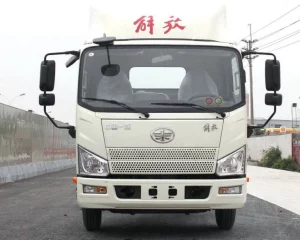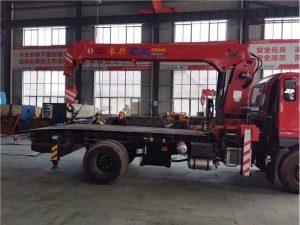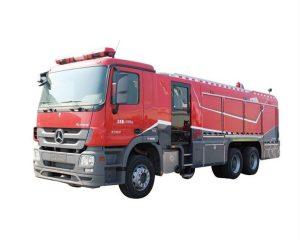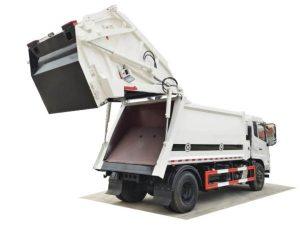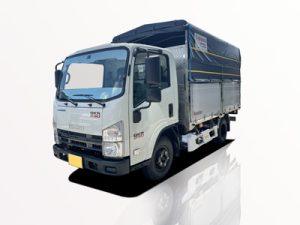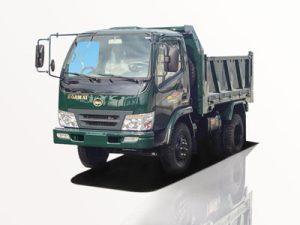Monday to Saturday - 8:00 -17:30
Sewer Vacuum Truck: A Comprehensive Guide
The sewer vacuum truck, an essential piece of equipment for municipal and commercial maintenance of sewer systems, plays a crucial role in keeping our wastewater management efficient and safe. This article will provide an in-depth understanding of sewer vacuum trucks, their components, applications, and much more.
What is a Sewer Vacuum Truck?
A sewer vacuum truck, also known as a vacuum tanker truck, is specialized heavy-duty equipment designed for suctioning and transporting liquid waste and debris from sewer systems. These trucks are equipped with a powerful vacuum system that utilizes high suction pumps, making them indispensable for sewer maintenance services.
How Sewer Vacuum Trucks Work
Sewer vacuum trucks utilize a combination of suction and pressure techniques. The process involves:
- Suction Process: The vacuum system creates a low-pressure environment inside a tank, allowing it to draw wastewater and debris through a hose.
- Transport Mechanism: Once collected, the waste is stored in a sealed tank that is designed to handle corrosive materials.
- Disposal: After transport, the waste is safely disposed of at a designated wastewater treatment facility.
Key Components of Sewer Vacuum Trucks
1. Vacuum System
The vacuum system is the heart of the truck, responsible for the suctioning action. It generally consists of:
- Vacuum Pumps: These can be rotary vane or positive displacement pumps, and are selected based on the specific requirements of the job.
- Hoses and Attachments: Flexible hoses of varying lengths, along with specialized attachments, help in reaching different areas of the sewer system.
2. Storage Tank
The storage tank is designed for secure waste collection.
- Material: Typically, these tanks are made from high-strength steel or polyethylene to withstand corrosive materials.
- Capacity: Tank sizes vary widely, usually ranging from 800 to over 3000 gallons.
3. Control System
The control system allows the operator to manage suction power and monitor tank levels.
- Control Panel: Features monitoring gauges and valves to adjust the vacuum pressure.
- Safety Features: Includes alarms for tank overflow and pressure levels.
4. Chassis
The chassis is the truck’s foundation, supporting both the vacuum system and storage tank. Key features include:
- Durability: Designed to handle heavy loads and rugged conditions.
- Drivetrain: Usually features a powerful engine and braking system to manage weight and waste transport.
Applications of Sewer Vacuum Trucks
1. Residential Drain Cleaning
Homeowners often require sewer vacuum trucks for clearing clogged drains and septic tank pumping. Quick response times help prevent potential backups and damages.
2. Municipal Waste Management
Municipalities utilize sewer vacuum trucks to maintain public sewer systems efficiently. Regular cleaning prevents blockages and keeps systems flowing properly.
3. Industrial Waste Services
Severe industrial sites, especially those with hazardous waste, rely on specialized vacuum trucks to manage their unique requirements, ensuring compliance with environmental regulations.
4. Emergency Services
In case of natural disasters or sewer overflows, sewer vacuum trucks serve as immediate response vehicles, cleaning up and restoring normalcy.
Cost Considerations for Sewer Vacuum Trucks
The costs associated with acquiring a sewer vacuum truck can vary significantly based on numerous factors:
| Factor | Details |
|---|---|
| Type of Truck | New vs. Used truck prices vary; specialized trucks cost more. |
| Size and Capacity | Higher capacity tanks generally increase cost. |
| Features | Advanced features like specialized pumps can increase investments. |
| Maintenance | Ongoing operational and maintenance costs are essential to budget. |
Maintenance of Sewer Vacuum Trucks
Regular Inspection
Routine inspections ensure the operational readiness of the truck, focusing on:
- Vacuum system checks
- Tank condition assessments
- Engine performance evaluations
Cleaning Protocols
Cleaning the truck after each use prevents cross-contamination and extends equipment life.
Scheduled Servicing
Establishing a scheduled maintenance plan helps in identifying issues before they become significant problems.
Choosing the Right Sewer Vacuum Truck
Factors to Consider
- Volume of Waste: Assess the average waste you will be managing to select an appropriate tank size.
- Type of Waste: Understanding the content (liquid, sludge, debris) determines the right suction and pump system.
- Regulatory Compliance: Ensure the truck meets all local regulations for environmental safety and waste disposal.
- Fuel Efficiency: Consider the long-term running costs; efficient models can save money over time.
Provider Reputation
Researching the manufacturer or vendor’s reputation is crucial for post-purchase support and service availability.
Environmental Considerations
Using sewer vacuum trucks responsibly is vital for minimizing environmental impact. Important practices include:
- Proper Waste Disposal: Always dispose of waste materials at authorized facilities.
- Spill Prevention: Regularly monitor tank seals and valves to prevent leaks during transport.
- Compliance with Regulations: Stay updated on local environmental protection regulations to ensure sustainable operations.
Training and Safety Protocols for Operators
Operator Training
Comprehensive training ensures operators are familiar with the truck’s systems and safety protocols:
- Understanding the vacuum system
- Emergency procedures
- Safe operating practices
Safety Equipment
Providing operators with necessary safety gear, including gloves and masks, minimizes health risks associated with handling waste.
Accident Avoidance Strategies
Implementing accident avoidance strategies like regular drills and safety checks contributes to workplace safety.
FAQ Section
1. How do I choose the right size sewer vacuum truck?
Your choice depends on the volume of waste you expect to handle. Smaller trucks are suitable for residential use, while larger models are needed for municipal services.
2. Can I rent a sewer vacuum truck instead of buying one?
Yes, many companies offer rental services, which can be cost-effective for short-term needs or specific projects.
3. What types of waste can be collected by a sewer vacuum truck?
Sewer vacuum trucks can collect various liquids, sludge, and debris, making them versatile for many applications.
4. What maintenance is needed for sewer vacuum trucks?
Regular checks on the vacuum system, tank condition, and engine performance are needed along with routine cleaning of the tank and hoses.
5. Are there any safety risks associated with operating a sewer vacuum truck?
Yes, risks include exposure to hazardous waste and potential spills. Proper training and safety practices are essential to mitigate these risks.
6. Is it necessary to have special licenses to operate a sewer vacuum truck?
In most regions, operators may require specific commercial driving licenses along with specialized training for handling waste materials.


